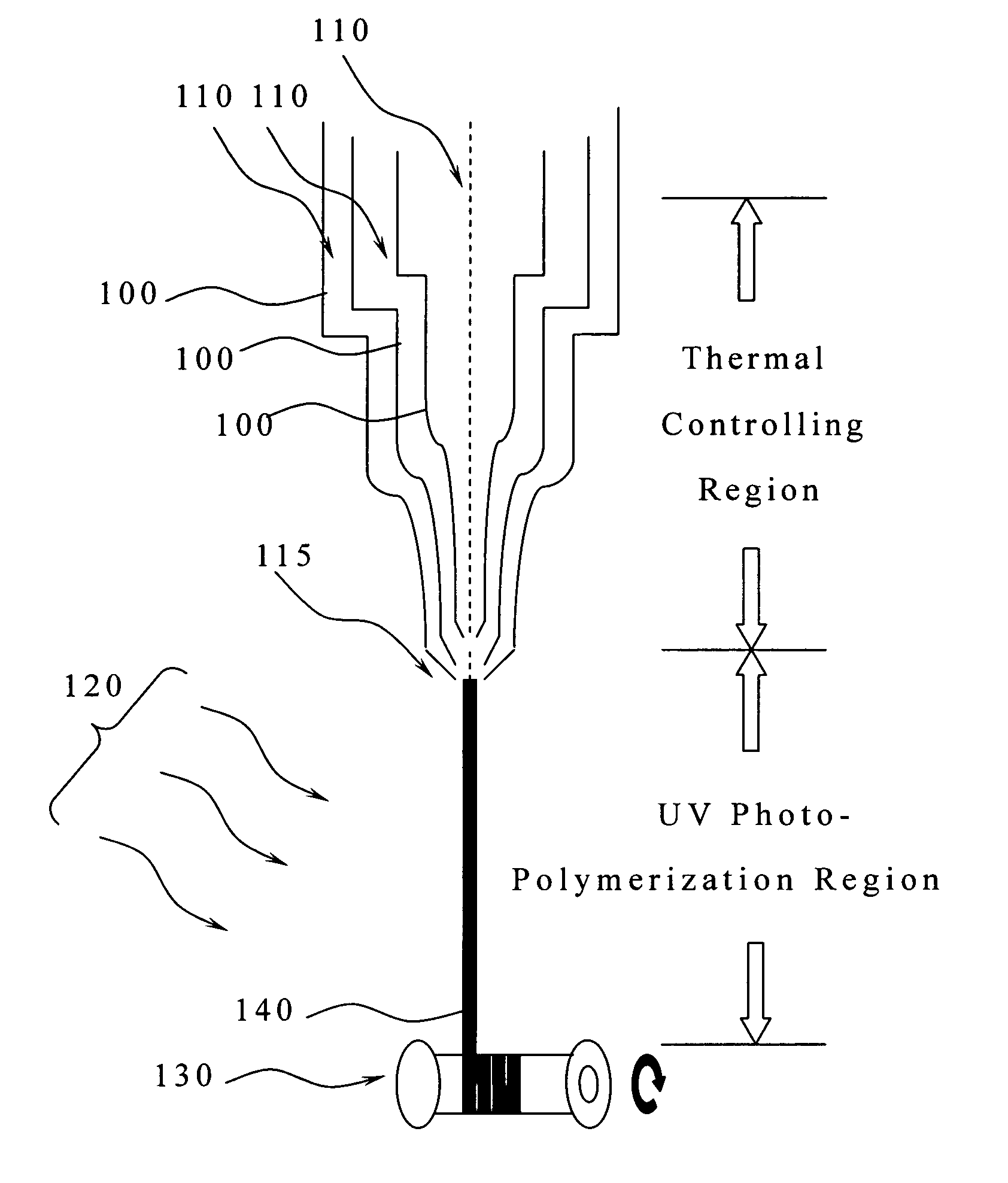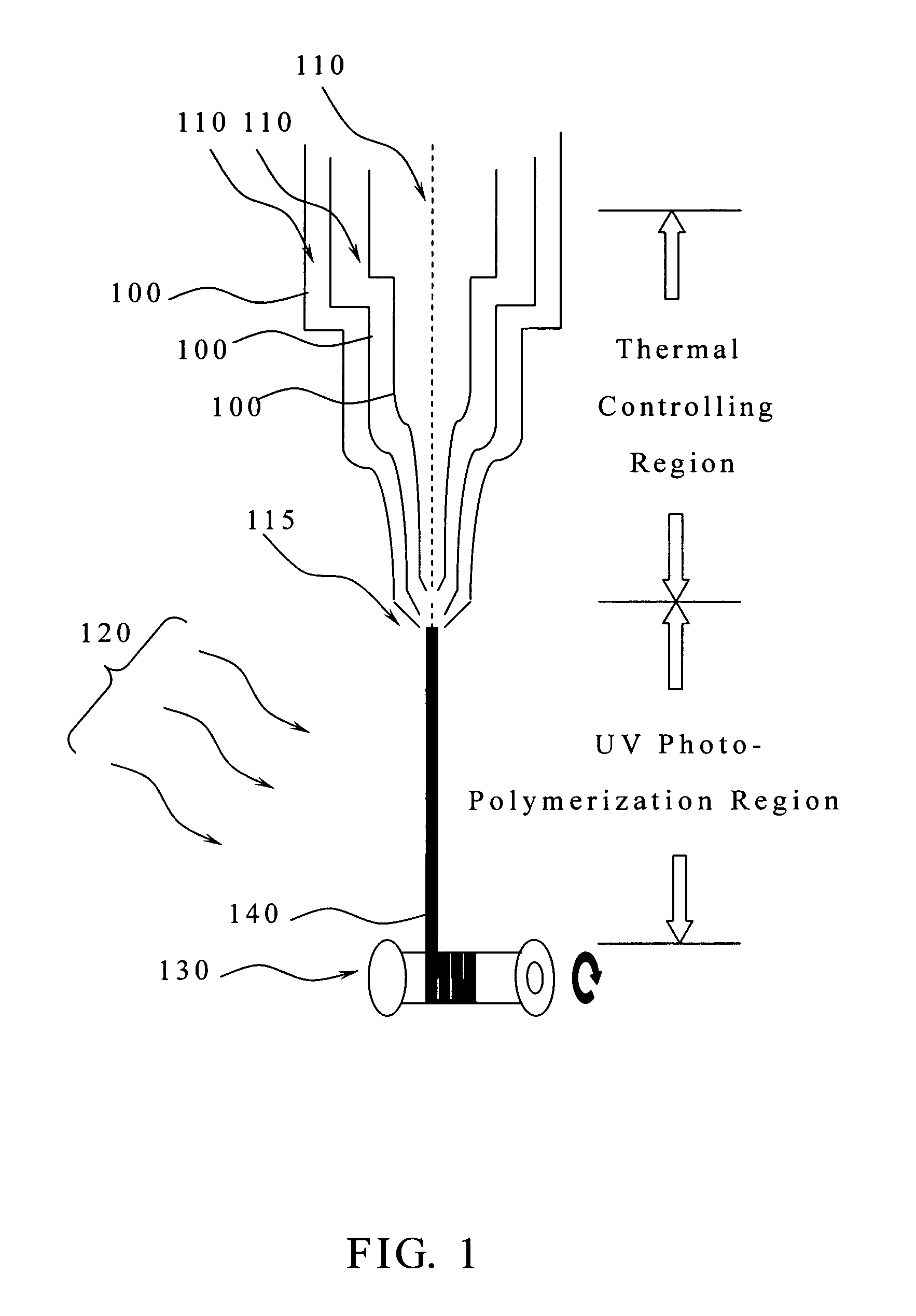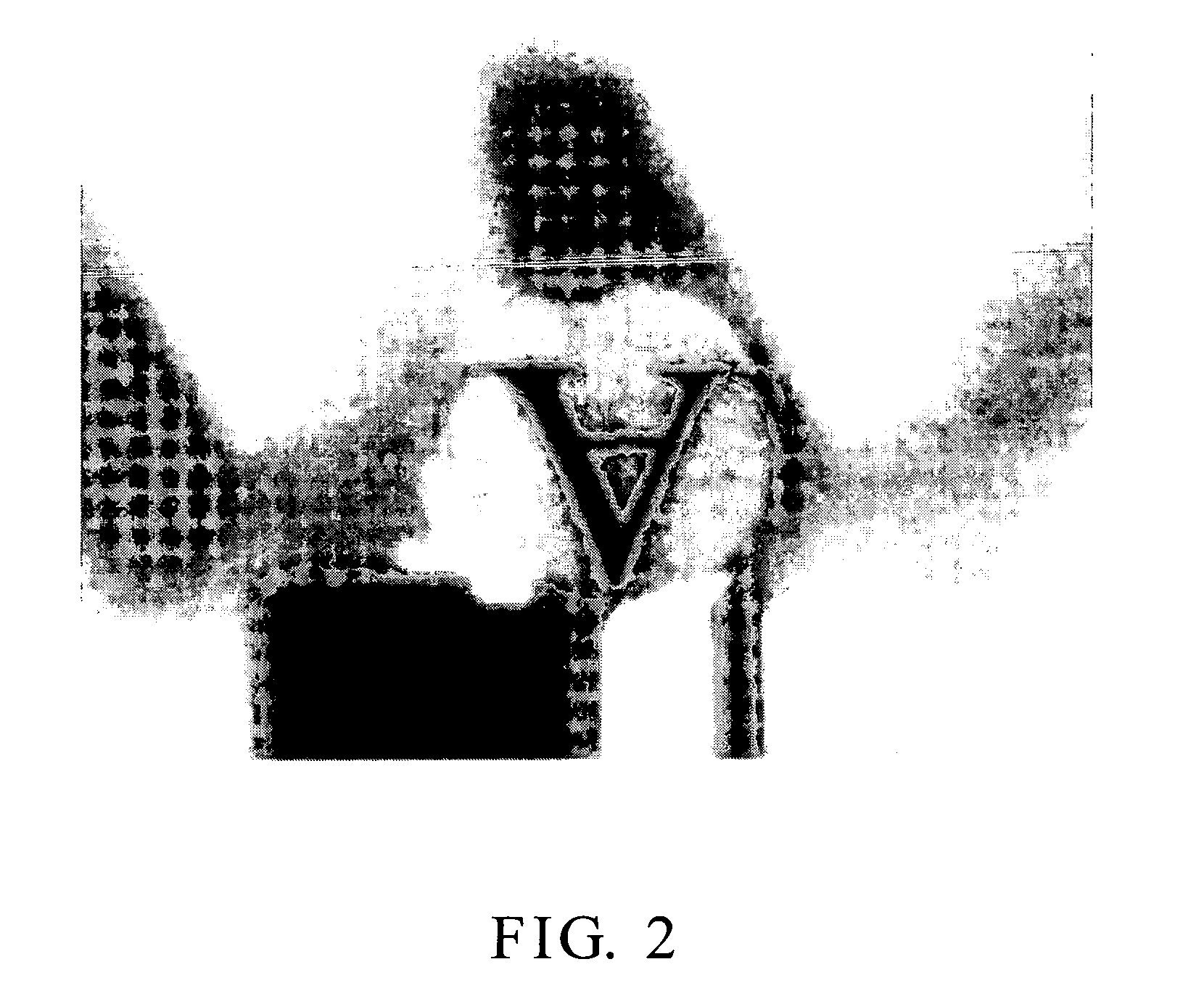Gradient refrective-index plastic rod and method for making the same
a plastic rod and refractive index technology, applied in the field of gradient refractive index (grin) plastic rods, can solve the problems of less research in plastic lenses, unfavorable long-distance communication of grin plastic rods, and limited quartz research, so as to enhance the whole refractive index and the na value, good mutual solubility, and enhance the effect of whole refractive index and na valu
- Summary
- Abstract
- Description
- Claims
- Application Information
AI Technical Summary
Benefits of technology
Problems solved by technology
Method used
Image
Examples
example 1
Process of Nanoparticles
[0055] The present invention utilizes reverse micellar systems to perform the redox reaction for making nanoparticles. A surfmer is dissolved in a monomer solution like MMA solution as an organic phase. AgNO3 solution acts as a water phase A, and NaBH4 solution acts as another water phase B.
[0056] Next, the water phase A and the water phase B are respectively dropped into the MMA organic phase by using the micropipette at 25° C., and each of the water phase A and the water phase B and the MMA organic phase are in a weight ratio of 1 / 1. The water phase A and the water phase B with the MMA organic phase, respectively, are formed into reverse micellar systems A and reverse micellar systems B.
[0057] Later, the reverse micellar systems A and the reverse micellar systems B are mixed and vibrated under ultrasonication for 1 hour, wherein the reverse micellar systems A and the reverse micellar systems B collide, diffuse and reagglutinate with each other, for happe...
example 2
Centrifugal Diffusing Polymerization Process of Plastic Rod
[0058] The process of the plastic rod can use the centrifugal diffusing polymerization. The process is divided into a pre-polymerization stage and a diffusing polymerization stage. The polymerization conditions and the monomer ratios are shown as TAB. 2:
TABLE 2Weight Ratio ofReactionReactionMonomersPMMATemperature (° C.)Time (Hour)MMA / DS = 3 / 10%652MMA / DS = 3 / 15%553MMA / DS = 3 / 110% 601MMA / DS = 3 / 112% 602MMA / DS = 4 / 15%553MMA / DS = 4 / 112% 552MMA / BzMA = 3 / 15%552MMA / BN = 3 / 15%552MMA / BN = 4 / 15%552
[0059] 0.2 wt. % of AIBN initiator is added into the monomer solution having silver nanoparticles resulted from the reverse micellar systems, under ultrasonication for 5 minutes, and poured into the glass tube with 6 mm in internal diameter, 8 mm in external diameter, and 250 mm in length. Appropriate space remains in the glass tube, and its open end is sealed. Then, the glass is placed in the centrifuge, kept rotating horizontally in a ...
example 3
Swelling Polymerization Process of Plastic Rod
[0063] The commercial coupler-stabilized titanium oxide (TiO2) nanoparticles that contains the surfmer, are mixed with the monomer composition together, and poured into a plastic tube, which is a thick plastic tube such as a PMMA plastic tube with 2 mm in internal diameter and 3 mm in external diameter, or 4 mm in internal diameter and 6 mm in external diameter, for example. The monomer composition, surfmer and nanoparticles are not given unnecessary details due to being discussed above.
[0064] Next, a swelling reaction is performed for prepolymerizing the monomer and the surfmer to a prepolymer. In a preferred embodiment of the present invention, the swelling reaction can be performed at 55° C. to 65° C. for the predetermined time in a range of 10 hours to 40 hours.
[0065] Later, a polymerization is performed by heating the prepolymer in the plastic tube and reacting at 40° C. to 80° C. for 10 hours to 40 hours, so as to form the GRIN ...
PUM
| Property | Measurement | Unit |
|---|---|---|
| refractive index | aaaaa | aaaaa |
| external diameter | aaaaa | aaaaa |
| external diameter | aaaaa | aaaaa |
Abstract
Description
Claims
Application Information
 Login to View More
Login to View More - R&D
- Intellectual Property
- Life Sciences
- Materials
- Tech Scout
- Unparalleled Data Quality
- Higher Quality Content
- 60% Fewer Hallucinations
Browse by: Latest US Patents, China's latest patents, Technical Efficacy Thesaurus, Application Domain, Technology Topic, Popular Technical Reports.
© 2025 PatSnap. All rights reserved.Legal|Privacy policy|Modern Slavery Act Transparency Statement|Sitemap|About US| Contact US: help@patsnap.com



